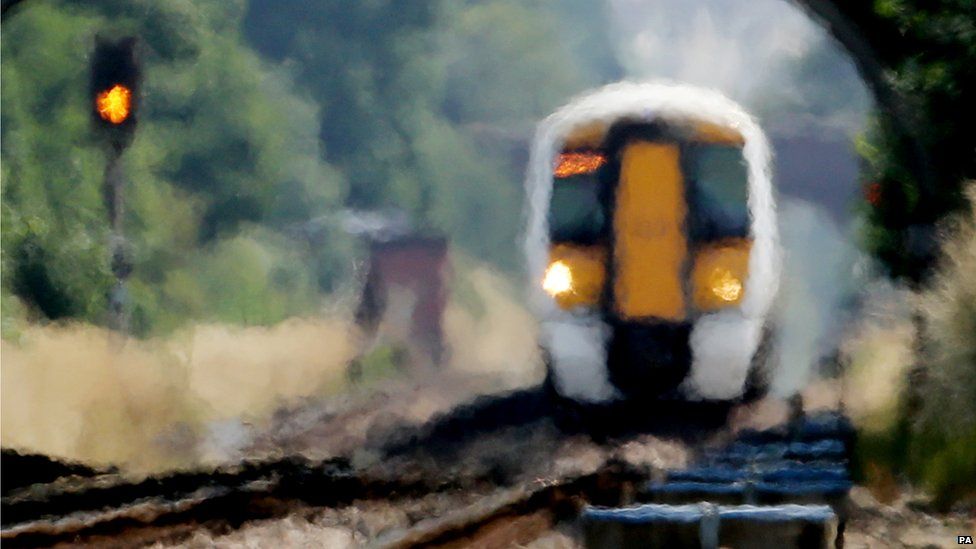Who, What, Why: Why does hot weather cause rail delays?
- Published

As the hottest weather so far this year hits parts of the UK, train passengers are being warned of further train delays caused by buckling rails. Why does this happen, asks Justin Parkinson.
On hot days, steel rails exposed to direct sunshine can become 20C hotter than the air temperature, according to Network Rail. The resulting expansion can cause extreme compression and buckling. When this happens, lines become impassable and close for repairs, which can't usually happen until temperatures drop again.
Some operators have warned of temporary speed restrictions on stretches deemed most at risk, as slower trains exert lower forces on the track, reducing the risk of buckling.
In the past, the UK's main system of coping with extreme heat involved leaving gaps, known as expansion joints, along the line, allowing rails to slide past each other as they expand. But the small breaks in the line meant trains were noisy and gave bumpy rides.
Under the replacement system, to prevent buckling the track is "pre-stressed" or stretched. Only when it gets unusually hot does the metal expand enough to pose a risk of rails pushing together and buckling.
This treatment allows rails to be welded together, leaving no gaps. In the UK rail tension is set so that they only start to expand - and thereby push against each other - when the outside temperature gets to 27C.
"This means there's a greater risk of buckling than there once was, but the modern system was introduced to make the ride smoother for passengers and quieter for those living near the track. Removing the joints also reduces damage and maintenance requirements," says Prof Simon Iwnicki, director of Huddersfield University's Institute of Railway Research.
Network Rail already paints "at-risk" sections of lines white to reflect more heat and reduce expansion.
Iwnicki advocates ballast being formed into "shoulders" at the ends of sleepers to prevent sideways sliding and help to resist buckling when temperatures are high. Japan, Austria, and other countries use "slab track" - where rails are laid on reinforced concrete slabs, holding them more rigidly - to varying extents. It's also used in the section of the Eurotunnel which runs under the English Channel.
But Network Rail estimates slab track is four times dearer to install than that on sleepers and ballast, and "it's hard to make a business case" for it, even taking into account maintenance savings.
There's some good news for commuters, however. The heatwave ends on Thursday.
Subscribe to the BBC News Magazine's email newsletter to get articles sent to your inbox.